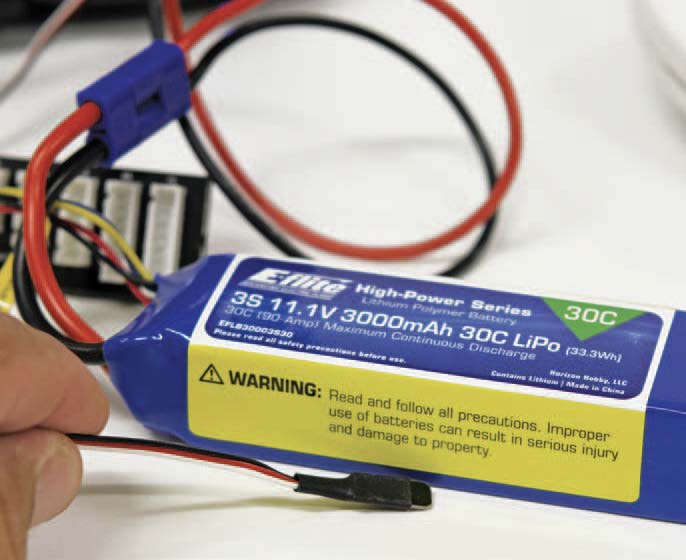The short answer is that when it comes to flight times and motor performance, the higher a battery’s C rating, the more likely it will make you smile. A 45C pack makes a joke of a 10C pack when it comes to power delivery. The C rating for a LiPo battery, quite simply, refers to the capacity of energy the battery can safely discharge, represented as a multiple of its overall capacity. A battery that has a higher C rating delivers more energy, and that means higher performance. The big difference between batteries with different C ratings is the fact that the higher-rated batteries suffer less from voltage drops under load. This ability to maintain a higher and more consistent voltage is what typically generates the high performance we enjoy. This is particularly important when you have multiple motors turning multiple rotors.
A 2000mAh pack will safely deliver 20 amps continuously (10 times 2000mAh equals 20 amps). A 20C pack of the same capacity will safely allow you to draw 40 amps from it continuously. That’s the same capacity and twice the amp draw. There are battery packs out there rated at 30C, 45C, and even 70C that will deliver (in our 2000mAh example) 60, 90, and 140 amps. This major increase in current allows us to run bigger (or more) motors in your multirotor for increased duration and/or payload-lifting capabilities. A higher C discharge rating gives us that extra “oomph” we enjoy in flight, no matter the airframe.
Although a pack with a higher C rating can often be charged in less time because it can tolerate a higher current rate, don’t be in a rush; you can always charge it at 1C (one times the capacity), which will take about an hour for a complete charge. Doing this has produced the best results in our experience; we have some older packs that still operate well after
hundreds of charge and discharge cycles.
Team RotorDrone


